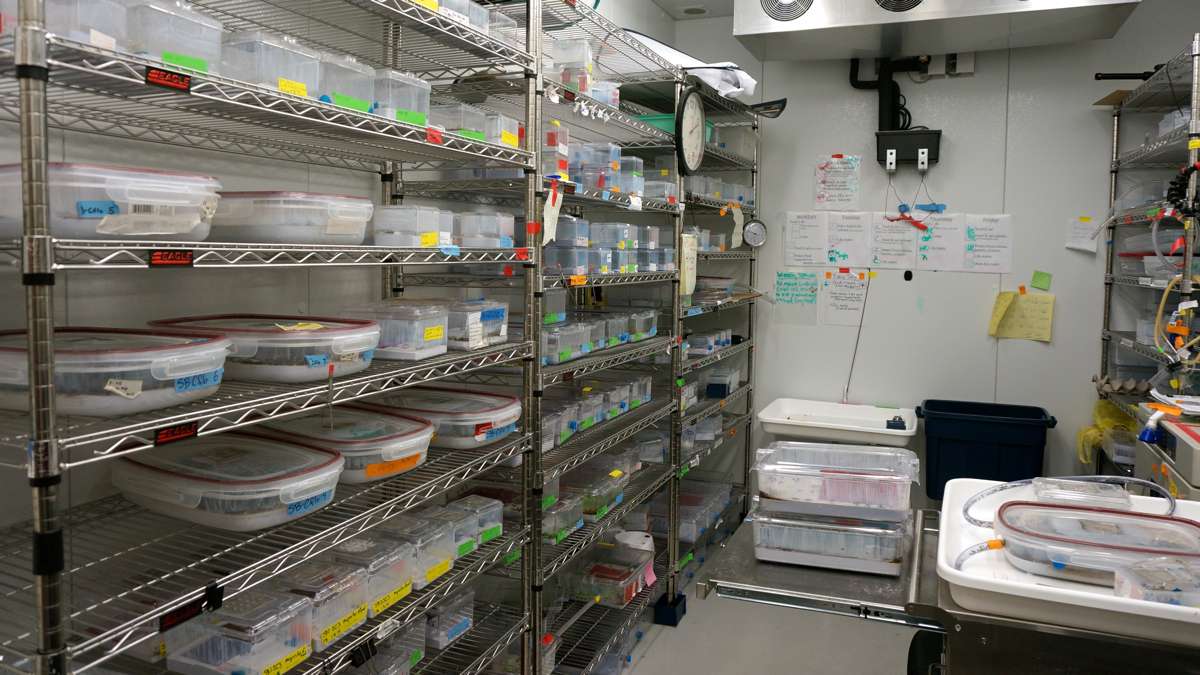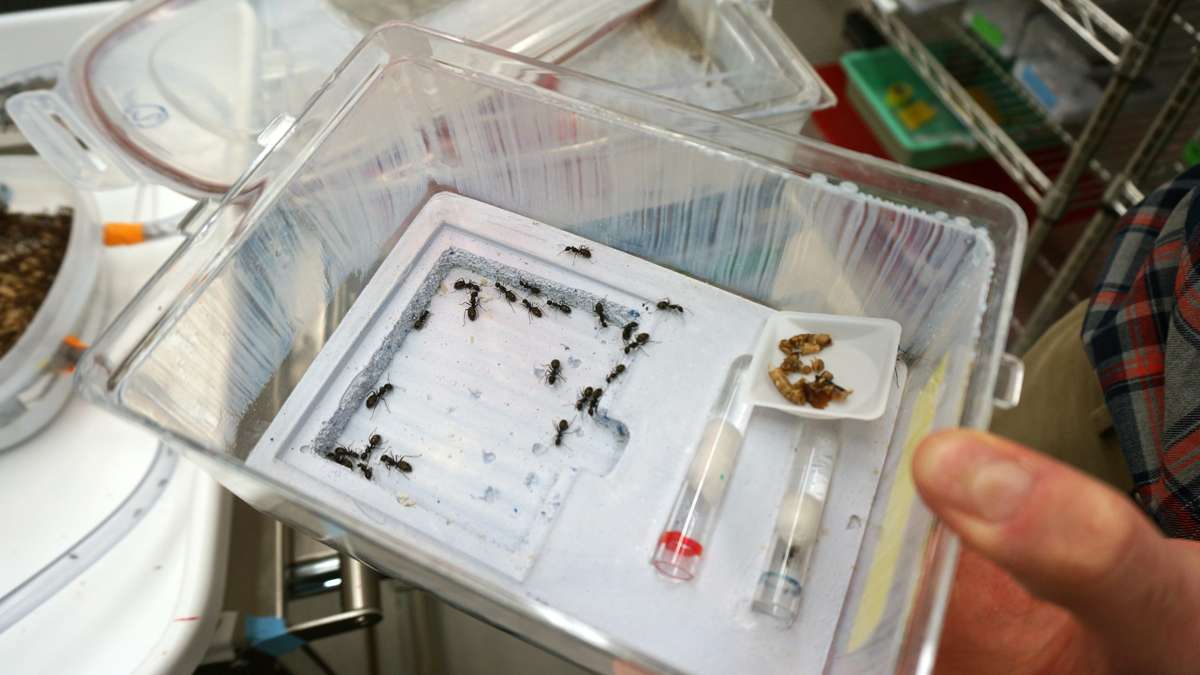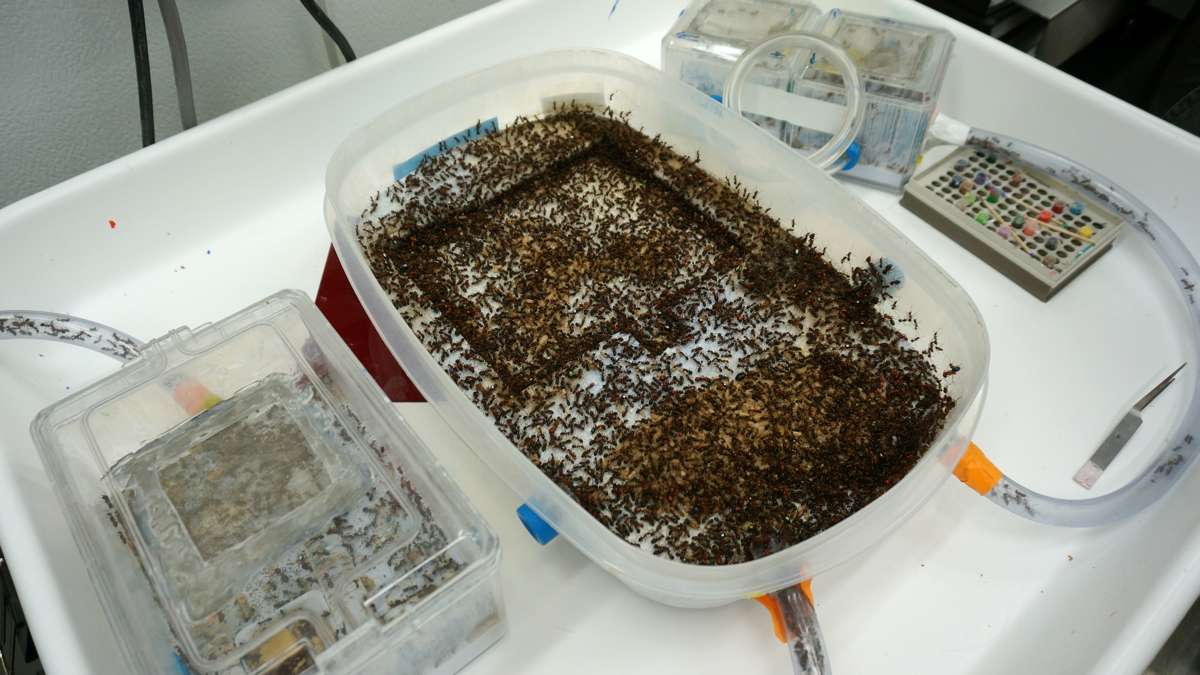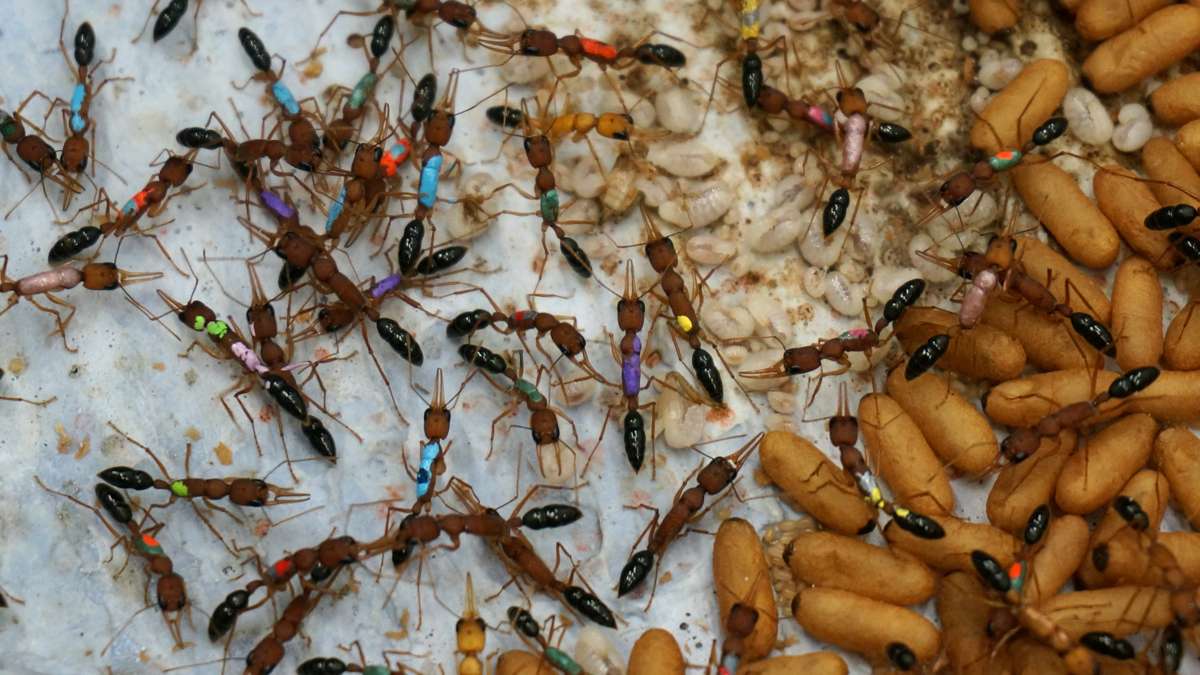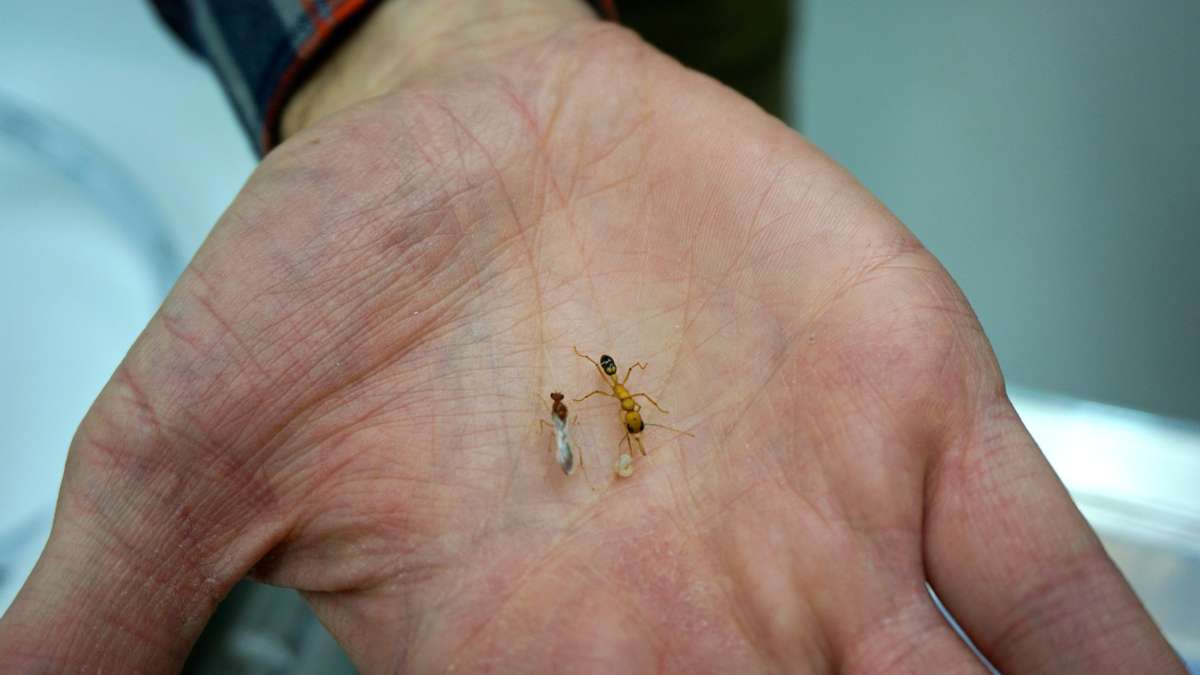Brainy or brawny? For ants, it comes down to more than DNA
ListenResearchers at the University of Pennsylvania are studying the brains of ants at the molecular level for clues on how social behavior comes about.
Inside the ant lab at the University of Pennsylvania, about 4,000 carpenter ants coat the inside of a Tupperware-like container. The teeming mass of black bodies looks chaotic, but each ant is performing its assigned duty.
The youngest full-grown ants, for example, are busy nursing the babies.
“As they get older, they will learn to take out the trash and do all of the household chores,” says Daniel Simola, a postdoctoral researcher. For these ants, that includes carrying out dead ants or old food to a self-designated garbage pile in one corner of the nest, which they also use as a collective bathroom.
“After that, the ants start leaving their nest, and going to find food or engaging in defensive patrols around the nest to make sure there’s no predators,” says Simola.
Brain vs. brawnThese two core functions are achieved with two classes of workers known as majors and minors. Minor ants are smaller, smarter, and forage for food; majors are physically larger and more aggressive and protect the nest.
If ants were humans, those vast differences would largely be attributed to genetics. But in this case, the sequence of A, T, G, or Cs can’t explain the career dichotomy.
“A colony is made up of lots of different individuals that are highly genetically related, in some cases, clones of each other,” says Simola. “So it’s essentially like doing a giant twin study in a small box.”
Each ant is equipped with the same set of genes, but which ones are actually used is controlled by an elaborate system of molecular tags that can be passed down generation to generation and influenced by the environment. These “epigenetic” modifications to DNA or its surrounding proteins don’t change the underlying sequence. But they can mean the difference between a soldier ant and a tiny, brainy one.
Roberto Bonasio, another ant researcher at Penn, likens these marks to a symphony orchestra.
“If the genome is score of a symphony for a whole orchestra, then each different player will use a different part of the score,” he says. “And what tells which player what chord to play, those are the epigenetic mechanisms that we study.”
In humans, those same mechanisms drive why a given cell develops into a liver cell rather than a brain cell, for example.
Professor Shelley Berger, who advises Simola, says epigenetics is also thought to be hugely important in fully understanding diseases, including cancer. The tiny tags can dial down or turn off genes that protect against tumors. Or they can turn on genes that promote cancerous growth.
“A lot of the nutritional information we either get or don’t get, and a lot of the problems that are coming in from the environment — the way they manifest is through altering the epigenetic information,” she says.
Ants, with their clearly defined castes, offer an easier, cleaner way of beginning to understand the basics and, particularly, insights into how behavior is tied to epigenetic changes. The shared lab at Penn is one of the few places in the world where scientists are studying ants for this purpose, and they think it’s a smart move.
A huge perk is that ant genomes are small — on the order of 10 times smaller than humans — so the sequencing analysis that is required as a part of detecting epigenetic marks is much faster. Bonasio has led the effort in sequencing the genomes of these ants so that the experiments can be done.
Already, Simola has achieved some exciting results. By feeding ants a drug that alters the epigenetic landscape in the brain, he was able to make a brawny ant behave like a brainy one.
“What we’re learning is that there are certain epigenetic proteins that get turned on at the right time in brains to help engage a particular behavioral repertoire in an ant,” says Simola.
Longevity vs. brainpowerThe researchers are studying another ant species, Harpegnathos saltator, or Jerdon’s jumping ant, along similar lines. As before with the two very different worker ants, the queen and worker ants of this species share the exact same DNA.
“And yet the queen lives much longer, has a very different behavior, lays eggs, and the worker doesn’t,” says Bonasio.
Queens can easily live several times longer than a worker. But Berger says there are some costs associated.
“They also go through a neurodegeneration and an eye degeneration,” she says. “It’s not required — when you’re a reproductive queen at least — to be able to see, or to have a full brain.”
Climbing the social ladderDespite the radical differences between workers and queens, and the gene programs that are turned on or off to achieve them, neither of those roles is set in stone.
“I like to say Harpegnathos society is upwardly mobile,” says Bonasio.
If a queen is removed from a colony — as might happen in the wild if she dies — some of the workers duel with each other to take the crown.
“It’s really a mock duel,” explains Simola. “They just use their antennae to kind of slap each other.”
They fight for as long as two weeks until a winner emerges, ascending to the throne as a replacement queen, or gamergate.
Berger says they think the process is controlled epigenetically, in response to the sudden absence of the queen, who has her own scent.
“They’re getting this signal from the queen; the queen’s telling the workers that everything’s fine: ‘I’m reproducing, everything’s cool,'” she says. “But once that scent is gone they completely change behavior.”
Later, if a more dominant queen arrives, the replacement will back down, reverting to a worker. She’ll lose the ability to reproduce, and her life will be cut short. But she’ll also regrow parts of her brain and eye.
The dramatic changes associated with a change in caste –- especially as they relate to longevity and neurodegeneration — are important to understand molecularly, says Berger. They can begin to pin down what proteins are involved, and whether they’re also doing similar things in human cells.
“Our hope is that we can look at this neurodegeneration in ants and try to understand epigenetically what is going on, and possibly relate that to humans,” she says. “Because there is new evidence that neurodegeneration — Alzheimer’s disease, for example — has an epigenetic component.”
Any application to people is still many years away, Berger acknowledges. But it’s something to think about the next time you’re about to squash a pesky ant for stealing some food.
WHYY is your source for fact-based, in-depth journalism and information. As a nonprofit organization, we rely on financial support from readers like you. Please give today.










